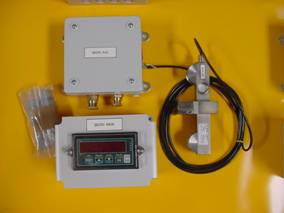Weekly musings from the world of crane, lifeboat, davit, elevators and lifting equipment load testing with Water Weights bags and load measurement equipment. Visit us online @ www.waterweightsinc.com
Thursday, October 28, 2010
About Proportional Load Measurement Systems
The majority of load measurement systems are used on cranes having multiple rope falls where the load seen by the hook is shared proportionally between the numbers of ropes used in the rigging. On most of these applications, the load measurement transducer is positioned at some point in the rigging, (the rope tie-off point or the compensation sheave or the compensation lever) where only a proportion of the load is measured by the instrument (load pin, load link, wedge socket, clamp-on, etc.).
The dilemma faced with these type systems is the repeatability and accuracy of the load measured compared with that seen at the hook. When only a proportion of the load is measured by the transducer, any losses in the crane rigging systems due to friction in sheave bearings and friction in ropes traveling around the sheave radius is amplified through the load measurement system by the number of times the transducer load is multiplied to equal the crane capacity (parts of line).
Consider this example; An overhead bridge crane with a lifting capacity of 500 tons utilizing 20 ropes in rigging, with each rope (theoretically) taking 25 tons or 5% of the entire load. If a load transducer is placed in the compensation sheave
where the load from two ropes is supported, the output from the transducer is amplified by 10 times to enable the display to show 500 tons. Any losses in the rigging sheaves, both at the point of loading and during lifting and lowering of the load are also amplified 10 times. Therefore, a loss in sensing the load of 1%, between the hook and the point where the transducer is installed, is amplified to 10% on the display.
The error potential is even greater with clamp-on transducers and line riders in multiple rope cranes. These devices can only measure a percentage of the load seen through the deflection in the rope. Accuracy and repeatability is frequently quoted at plus or minus 5% to begin with, add on the issue of friction losses in the
rigging and you can see the limitations in accuracy and repeatability.
What can be done? Consider installing additional load measurement transducers in the rigging so that a higher percentage of the load is measured by the system, or ask us about our load measuring systems mounted on the hook block.
http://www.waterweightsinc.com/en/crane-load-measuring-monitoring.html
Subscribe to:
Post Comments (Atom)

No comments:
Post a Comment